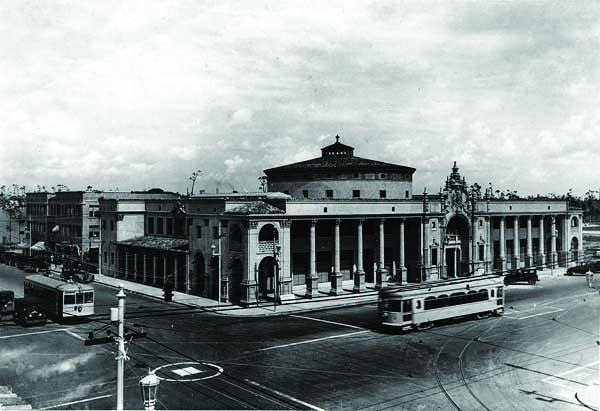Trolley-Ho!
The History of Coral Gables’ Electric Trolley System
Coral Gables was officially incorporated on April 29th, 1925. To say there was electricity in the air would be no understatement. In fact, the statement could be taken quite literally. Not only did Gables residents find themselves citizens of a newly-founded city, they also found themselves standing beneath the electrically charged wires which would power the street cars which defined mass transportation in the area throughout the 1920’s and 1930’s. The electric trolley shaped and transformed the urban landscape and enhanced the way people traveled from place to place. Although the electric trolley system finally got it’s feet off the ground in Miami in the 1920’s, the venture was a product of trial and error dating back to the early 1900’s.
In 1906, ten years after the City of Miami was founded, the first version of an electric trolley system appeared. Despite the fact that the city’s population had grown significantly since its founding in 1896, the recently incorporated city did not have the ridership required to support the venture. The project was scrapped a year and a half later due to lack of income. A second, slightly more successful attempt was made at developing a sustainable trolley system in 1915, though it would meet a similar demise only four years later. As the old saying goes: the third time’s a charm. 1922 marked the beginning of Miami’s Electric Trolley Era when the first streetcar using overhead wires was constructed. The Miami trolley system continued to expand throughout the greater Miami area and offered residents a new form of rapid transportation.
Coral Gables, however, would not benefit from the Electric Trolley Era until 1924, when it was announced by George Merrick that the existing Miami trolley track would be extended from Flagler Street to the newly completed Granada Entrance. This was an important development in the city’s history, as it provided a vital connection between the residents of Coral Gables and Miami’s downtown urban center. Merrick was quoted as saying that the extension of the trolley was “…of far-reaching importance, not only in Coral Gables’ development, but in the advance and progress of all western Miami.” It would take approximately 40 minutes to arrive in the Gables from downtown Miami.
Merrick, ever the visionary, must have been enticed by the idea of laying down his own tracks within the boundaries of his development and creating his own fleet of electric powered trolleys, which would be painted to compliment the color palettes and ascetics for which Coral Gables was known. Once the Flagler Street extension arrived at the edge of Coral Gables, work begun by laying a track south on Ponce de Leon Blvd. The trolley system would be up and running within the Gables’ downtown area by 1925.
Moving forward, there was a need to extend and expedite trolley access to the southwestern corners of the greater Miami area. Merrick took the opportunity and founded the Coral Gables Rapid Transit Corp. in the latter half of 1925. One of his goals was to cut down on the travel time via trolley from Downtown Miami to Coral Gables. According to an article in The Miami News from July 1925, it was announced that Merrick’s new line would be laid on Coral Way, S.W. 13th St, and South Miami Ave. These new inter-urban trollies could reach an excess of 55 miles an hour and could seat up to 60 passengers. The creation of these high-speed inter-urban lines would cut the transportation time from downtown to Miami to the Gables via trolley from 40 minutes to a mere 15-20 minutes.
Despite some delays, Merrick’s vision was fulfilled and five cars were in operation by May 27, 1926. The street cars, like anything Merrick was involved in, were extravagant and ornate. The Miami News described the interior of the trolleys: “Roomy, high-backed Pullman seats are of Spanish leather, flooring is of rubber tile and woodwork is of cedar and cypress. Lightning is obtained through use of old Spanish lantern reproductions.” The trolley maintenance yard was located where the Village of Merrick Park is currently situated. Merrick’s rapid transit line would prove to be one of the most popular methods of travel in the area from 1926 to 1935.
The electric powered trolley was not without its share of critics, however. General Motors had launched a series of publicity campaigns which declared that the trolley was outdated, noisy, and old fashioned. E.G. Sewell, Mayor of Miami from 1933 to 1935, shared similar sentiments and was often outspoken on the subject. This growing distain of the electric trolley system and a new general inclination towards internal combustion engines was punctuated by the 1935 hurricane, which marked the beginning of the end of Miami’s Trolley Era. The hurricane, which landed on November 4th, did extensive damage to the tracks and ceased operation of several pivotal routes which were never revived. Within several years, electric transportation went belly up and made way for the era of transportation we currently find ourselves living in today.
- Written by: Malcolm A. Lauredo (Nov. 2018)
- Edited by: Geisel Dieguez (June 2023)








